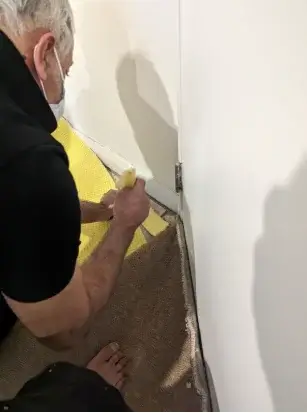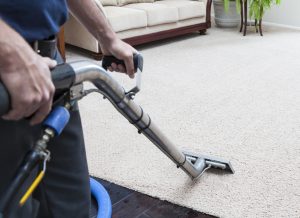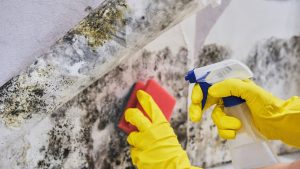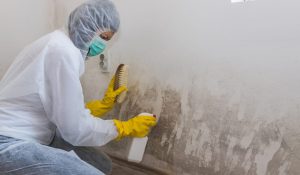
Water damage is a homeowner’s nightmare, especially when it affects your carpets. Ignoring water damage carpet cleaning can lead to more severe problems over time, including mold growth, unpleasant odors, and even structural damage to your home. It’s crucial to address the issue promptly with proper emergency carpet cleaning and water damage restoration techniques. In this article, we’ll explore the dangers of ignoring water-damaged carpets and provide practical solutions for fixing the problem.
Understanding Water Damage
Water damage occurs when unwanted water infiltrates your home, often due to natural disasters like floods, pipe bursts, or accidental spills. Carpets are particularly vulnerable because they absorb water quickly, providing a perfect breeding ground for mold and bacteria.
Types of Water Damage
- Clean Water Damage: This type comes from a clean source, such as a broken water line or a leaky faucet. It’s the easiest to handle but still requires immediate attention.
- Grey Water Damage: This water may contain some contaminants and typically comes from sources like washing machines, dishwashers, or toilets. Cleaning requires a more thorough approach.
- Black Water Damage: This is the most dangerous, often containing harmful bacteria and pathogens. It results from sewage backups or floodwater. Professional help is essential in this case.
The Risks of Ignoring Water Damage
Mold and Mildew Growth
One of the most significant risks of ignoring water-damaged carpets is mold and mildew growth. These fungi thrive in moist environments and can begin growing within 24 to 48 hours after water exposure. Mold not only damages your carpet but also poses health risks, particularly to those with allergies or respiratory issues.
Unpleasant Odors
A damp carpet quickly develops a musty smell due to the growth of mold and mildew. These odors can permeate your home, making it an uncomfortable living environment. Over time, the smell can become more challenging to eliminate, even with professional cleaning.
Structural Damage
Water can seep through the carpet and affect the flooring beneath. If left untreated, this moisture can weaken the structural integrity of your home, leading to costly repairs down the line.
Devaluation of Property
Ignoring water damage can decrease your property’s value. Potential buyers might be wary of investing in a home with a history of unresolved water issues.
Emergency Carpet Cleaning and Restoration
Addressing water damage promptly with emergency carpet cleaning and water damage restoration is crucial to prevent long-term damage. Here’s how you can tackle the issue:
Immediate Steps to Take
- Stop the Water Source: If possible, identify and stop the source of the water to prevent further damage.
- Remove Excess Water: Use a wet/dry vacuum to remove standing water from the carpet. The quicker you do this, the better.
- Air Circulation: Increase air circulation by opening windows and using fans or dehumidifiers. This will help dry out the carpet and underlying materials faster.
Professional Water Damage Restoration
For severe water damage, especially grey or black water, it’s advisable to seek professional help. Here’s what professionals typically do:
Inspection and Assessment
Professionals will first assess the extent of the damage. This step helps them determine the best course of action and the equipment needed.
Water Extraction
Using industrial-grade equipment, professionals will extract water from your carpet and pad. This step is crucial in preventing further damage and mold growth.
Drying and Dehumidifying
High-powered fans and dehumidifiers are used to dry the carpet and pad thoroughly. This process can take several days, depending on the severity of the damage.
Cleaning and Sanitising
Professionals will clean and sanitise your carpet to remove any bacteria or mold. They may also apply treatments to prevent mold growth in the future.
Restoration
Finally, any necessary repairs to the carpet or underlying flooring are made. In some cases, replacement may be the most viable option.
Preventing Future Water Damage
While it’s essential to address current water damage, prevention is equally important. Here are some tips to protect your carpets in the future:
Regular Maintenance
Regularly inspect your plumbing and appliances for leaks or signs of wear. Address any issues immediately to prevent potential water damage.
Install Water Alarms
Water alarms can alert you to leaks or flooding early, allowing you to address the issue before it becomes severe.
Use Area Rugs
Consider using area rugs in high-risk areas, like near sinks or washing machines. These are easier to clean and replace than wall-to-wall carpeting.
Elevate Appliances
If possible, elevate appliances like washing machines and water heaters to minimize the risk of water damage to the flooring.
Conclusion
Ignoring water damaged carpet can have severe consequences for your home and health. By understanding the risks and taking immediate action, you can mitigate damage and prevent future issues. Remember, when it comes to water damage, time is of the essence. Don’t hesitate to contact professional water damage restoration services to ensure your home remains a safe and comfortable environment.
By following these guidelines, you can protect your investment and maintain the value and comfort of your home. Be proactive in both addressing and preventing water damage to ensure your living space remains healthy and welcoming for years to come.



